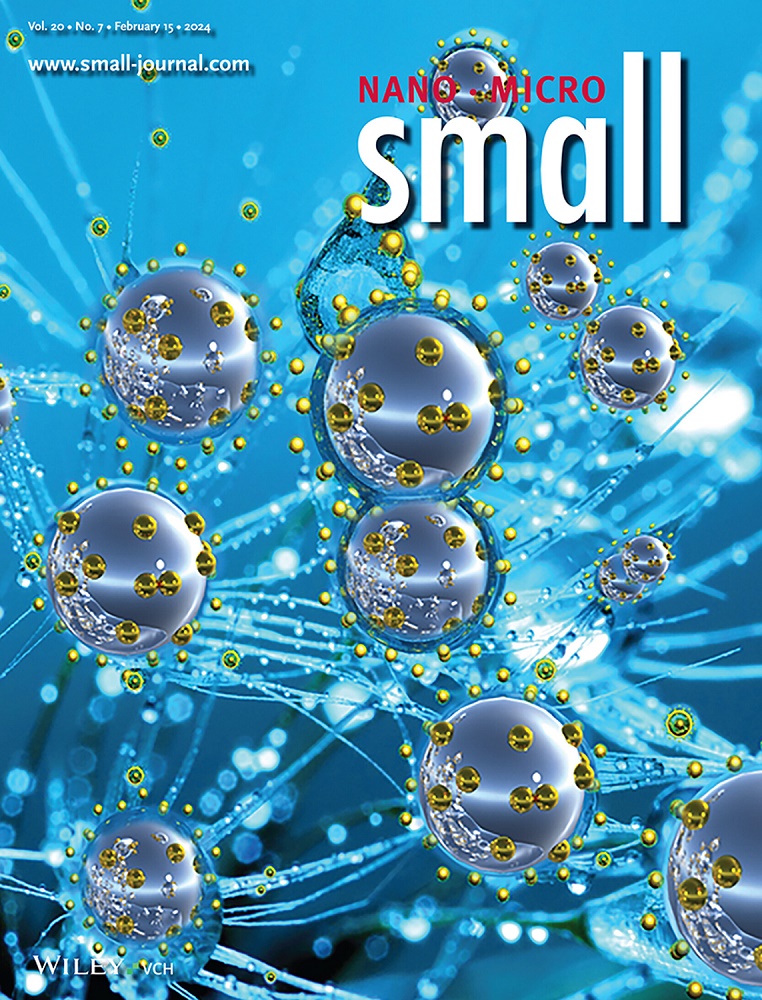A Biomimetic Soft Actuator Achieves Efficient Fluorescence via Covalent Cross‐Linking
IF 13
2区 材料科学
Q1 CHEMISTRY, MULTIDISCIPLINARY
引用次数: 0
Abstract
The bioluminescence mechanisms of deep‐sea organisms provide innovative ideas for biomimetic design. To meet the detection needs in low‐light deep‐sea environments, the development of soft robots with high‐brightness luminescence is crucial for long‐term in situ observation. Directly incorporating high‐performance fluorescent molecules into hydrogel matrices presents challenges: fluorescent molecules tend to dissociate in physically crosslinked systems, and complex aqueous environments may lead to instability in the material structure. These issues limit the fluorescence stability and service life of underwater devices. Inspired by the behaviors of marine organisms, this study proposes a biomimetic soft actuator with high fluorescence intensity. The actuator adopts a bilayer hydrogel structure, where the luminescent layer (PT4B‐N), covalently crosslinked with fluorescent molecules, achieves a high photoluminescence quantum yield (PLQY > 60%), and the pH‐responsive driving layer (PNPC) enables motion control (strip‐shaped hydrogel: maximum bending angle ≈360°, cycle time ≈20 min). The experimental results demonstrate that the actuator can realize biological‐like synergic fluorescence and shape change (SFSC) behavior.一种仿生软致动器通过共价交联实现高效荧光
深海生物的生物发光机制为仿生设计提供了创新思路。为了满足低光深海环境下的探测需求,开发具有高亮度发光的软机器人对长期的原位观测至关重要。将高性能荧光分子直接结合到水凝胶基质中存在挑战:荧光分子在物理交联系统中倾向于解离,复杂的水环境可能导致材料结构不稳定。这些问题限制了水下设备的荧光稳定性和使用寿命。受海洋生物行为的启发,本研究提出了一种具有高荧光强度的仿生软致动器。致动器采用双层水凝胶结构,其中发光层(PT4B‐N)与荧光分子共价交联,实现了较高的光致发光量子产率(PLQY >;60%), pH响应驱动层(PNPC)实现运动控制(条形水凝胶:最大弯曲角度≈360°,循环时间≈20分钟)。实验结果表明,该致动器可以实现类生物的协同荧光和形状变化(SFSC)行为。
本文章由计算机程序翻译,如有差异,请以英文原文为准。
求助全文
约1分钟内获得全文
求助全文
来源期刊

Small
工程技术-材料科学:综合
CiteScore
17.70
自引率
3.80%
发文量
1830
审稿时长
2.1 months
期刊介绍:
Small serves as an exceptional platform for both experimental and theoretical studies in fundamental and applied interdisciplinary research at the nano- and microscale. The journal offers a compelling mix of peer-reviewed Research Articles, Reviews, Perspectives, and Comments.
With a remarkable 2022 Journal Impact Factor of 13.3 (Journal Citation Reports from Clarivate Analytics, 2023), Small remains among the top multidisciplinary journals, covering a wide range of topics at the interface of materials science, chemistry, physics, engineering, medicine, and biology.
Small's readership includes biochemists, biologists, biomedical scientists, chemists, engineers, information technologists, materials scientists, physicists, and theoreticians alike.
 求助内容:
求助内容: 应助结果提醒方式:
应助结果提醒方式:


